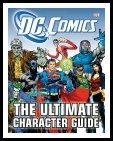DC Comics, the Sage Continues!
DC Comics went through some radical changes during the 1970s and 1980s. Known as Nation Comics still in 1969, they were merged with entertainment giant, Warner Bros/7 Arts. With this new management position and style they grew tired of, then editor, Infantino’s less than spectacular track record.
A
form children’s magazine publisher, Jenette Khan replaced Infantino in
1976, but was apparently not much more successful. At any rate, during
this time period, DC-Comics tried to compete with the more successful
Marvel Comics, by dramatically increasing their output of characters.
Some called this the “DC Explosion”. New characters such as Firestorm
and Shade, the Changing Man, and several non-superhero titles were
featured. Still frustrated through, Warner pulled the plug and
dramatically cut back on titles and fired many staffers in what industry
watchers dubbed "the DC Implosion".
With Warner no longer allowing the market flood of new titles, the new DC Comics management of publisher Jenette Kahn, vice-president Paul Levitz and managing editor Dick Giordano needed to come up with new ways to boost sales. They decided to address the problem of their current talent instability.
They decided to follow the examples of Atlas/Seaboard Comics and such independent companies as Eclipse Comics, and began to offer more concrete financial rewards to their staffers, such as royalties. In addition, the company created the publishing concept of the limited series. This allowed more flexible arrangements for story lines that could become successful without the pressure of immediately following them up on an indefinite basis.
These new policy changes at DC Comics, immediately paid off with the success of “The New Teen Titans” by writer Marv Wolfman and artist George Pérez. This new team concept comic series earned significant sales. This was due in part to its creative quality and the new stability of the talent, who kept with the title for years. And in addition, the staff took early advantage of the limited series option. They created a spin off title, “Tales of the New Teen Titans”. This series presented the origins of the original characters without having to break the narrative flow of the main series or obliging them to double their work load with another ongoing title.
This successful revitalization of a minor title led the editorship to look at doing the same to their entire line comics. The result was the limited series “Crisis on Infinite Earths”. This gave the company an opportunity to dismiss some of the baggage of its history, and revise major characters such as Superman and Wonder Woman. Yet DC-Comics didn’t abandon its history all together. In 1989, they began publication of the DC Archive Editions, a series created to collect their early, rare issues into a permanent hardback format.
Meanwhile, British writer Alan Moore had re-energized the minor horror series Saga of the Swamp Thing. His highly acclaimed work sparked a comic book equivalent of rock's British Invasion. Numerous British talents, including Neil Gaiman and Grant Morrison, came to work for the company. The resulting influx of sophisticated horror and dark fantasy material led not only to DC abandoning the Comics Code for particular titles by those talents, but also to the later establishment in 1993 of the Vertigo imprint for mature readers.
Acclaimed limited series such as Batman: The Dark Knight Returns by Frank Miller and Alan Moore's Watchmen, also drew attention to changes at DC Comics. This new creative freedom and the attendant publicity allowed DC to seriously challenge the dominance of Marvel.
Use the link below to discover how DC got to where they are today!
More for DC Comics Fans
To see what DC is up to today, you can visit their official site at DC Comics .
There also looks to be quite a varied assortment of all things DC at Amazon that may tickle your taste buds. Just click the image to the left. Don’t stay too long though, and come back here. I have more interesting factoids on my next page.
If you want to keep up on the varied and interesting activities going on in the world of comic books, then feel free to sign up for my newsletter “Comics Galore” in the form below. And by all means, I would love to hear your comments and opinions on DC Comics. You can sure leave them for me at my contact page in the menu at the left. I may even be able to include them in my newsletter. I thank you ahead of time.
Dave Gieber










New! Comments
Have your say about what you just read! Leave me a comment in the box below.